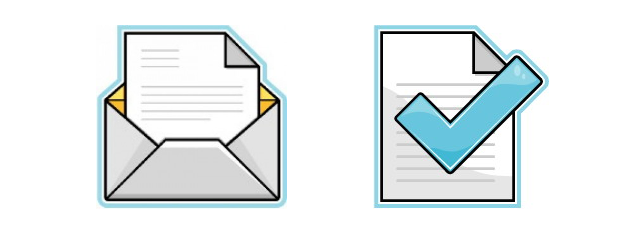correspondence
-
The true secret of the Yes/No response
I received a marketing email today from an expert in direct marketing, in which he wrote about sorting out the dead ducks from those who are really interested.
He referred to the Reader’s Digest Yes and No reply envelopes.
He called it the Yes/No option, implied that it was how to sort …read more
Source: PKP Communicators WordPress.com
-
10 ways to transform your sales letters
By phillipkp
Do you write letters for business? What happens to them?
We all write letters. Some of them are emails, some of them are to sell our products or services. Most of it is junk mail, and therefore a waste of time and money.
Consider the junk mail you receive. What makes it …read more
Source: PKP Communicators WordPress.com
-
Who wrote that letter for you, then?
By phillipkp
Standard letters. They undermine customer relationships, undo the best PR, lose customers, conflict with a company’s marketing efforts.
I have no objection to the use of standard letters, only to the letters themselves. Because they are seldom written by copywriters. In fact, they frequently read like the scribblings of backroom workers …read more
Source: PKP Communicators WordPress.com
-
Writing letters that sell
We all write letters, and many in business may feel that there’s nothing to it. So let me ask you this: do you get “junk mail”? What makes it junk? Do you throw it away because the product or service being offered is of no interest to you, or for some other reason?
How long does it take you to decide it’s not for you? Probably less than 3 or 4 seconds. In fact, in tests done some years ago, 3.2 seconds was the average time it took for an advertising message in newspapers or magazines to be rejected.
If the advertising message is in the form of a letter, you will make that decision based on the language used, the grammar, the tone, and even the layout … as well as the offer itself.
I wonder if you would read every word of a letter that began like this:
Dear Reader,
We at Commonplace Computers pride ourselves on the most advanced equipment for small businesses, comprising of PC’s, Laptop’s and Software. Indeed, we have won several awards for our technology and customer service. We are therefore pleased to offer you the chance to share in our success and become one of our privileged customers …
See what I mean? You make up your mind very quickly. There are certain things to include and certain things to avoid. Now, quickly jot down as many faults as you can find in that opening.
This is an edited version of an actual mailing I received not long ago. The original letter was set in a font that was difficult to read, but which I am unable to reproduce here. That apart, here are some of the other reasons for binning such a letter:
- It’s unpersonalised. There’s no excuse for Dear Reader
- There is no headline — how will the reader know what it’s about?
- The opening is one of my pet hates, “We at …”
- No opening ‘Hook’ to engage my attention
- The entire letter is self-focused
- Bad grammar: “comprised of”. Should be ‘comprising” or “consisting of”
- Bad punctuation: plurals such as PCs and Laptops do not require apostrophes
So what should you include?
- Whenever possible, address the recipient by name
- Put your most powerful ‘come on’ in a headline
- Make the opening sentence a compelling reason to read on
- Follow that with a clear summary of your proposition
- Follow the sequence of persuasion (ask someone who knows how to sell)
- Have the letter proof read by someone with a proven knowledge of grammar and punctuation
- Have a clear call to action
- Repeat your main benefit in a PS
There are other guidelines to follow, but these will do for now. But the best advice I can give you is to employ a professional copywriter. Otherwise your mailings could be just a waste of money.



